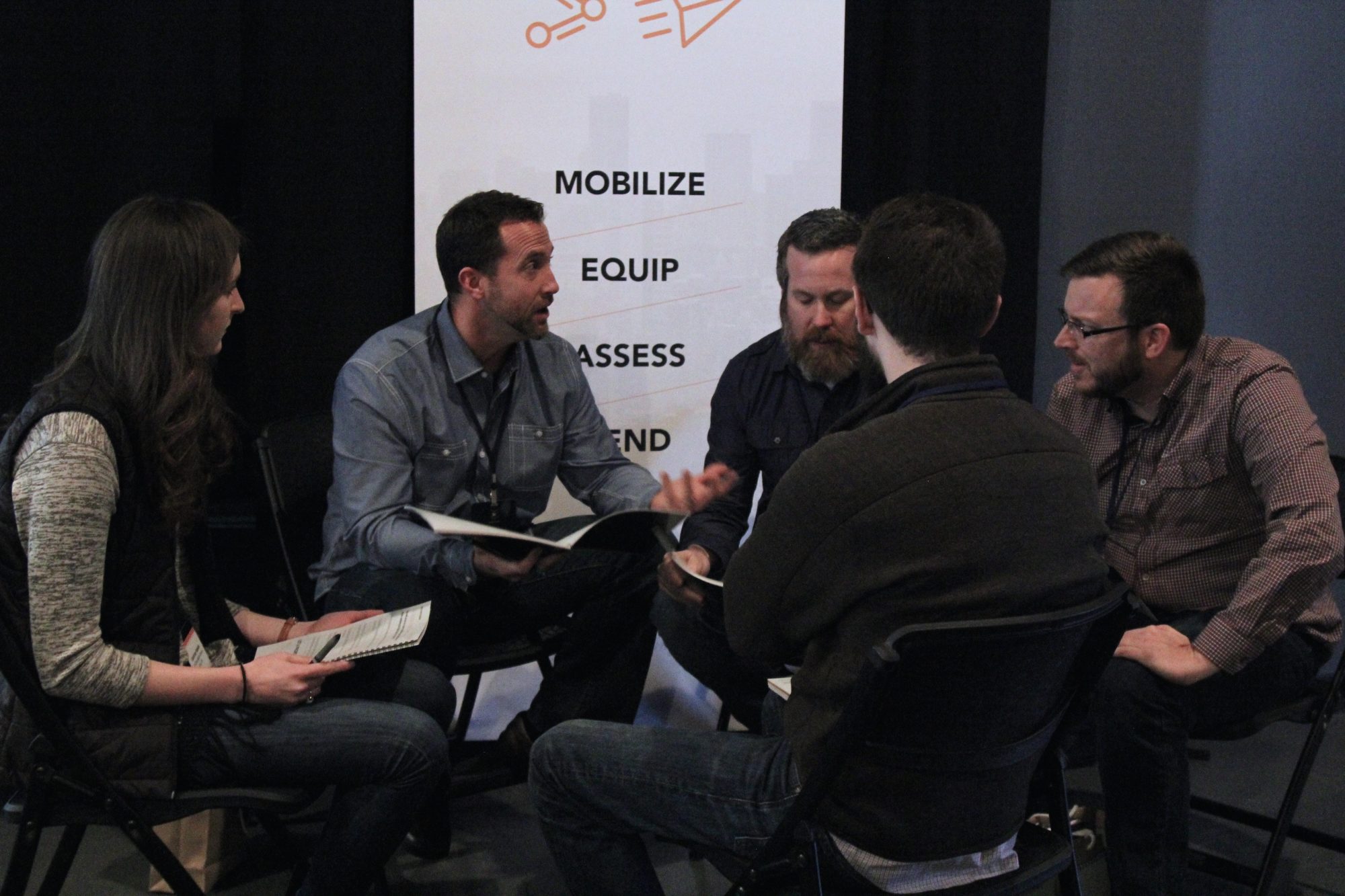
As I was teaching on global mission this week at my local church, a woman in the back of the room raised her hand and shared her thoughts on why people should prepare well before serving overseas. Her words went something like:
“Engaging in cross-cultural missions is like being a blacksmith or a carpenter. To really be good and effective, you have to take time to learn your craft. Who ever heard of a master carpenter who only months ago picked up a tool? For some reason however, people think they can simply move overseas and be skilled missionaries. How foolish.”
I offered a hearty amen and then compelled my students to find the preparation and development they so desperately need within our local church.
The Local Church, the Center of Missionary Preparation
Missionary development can be boiled down to one key biblical imperative found in 2 Timothy 2:2, “. . . what you have heard from me in the presence of many witnesses, entrust to faithful men, who will be able to teach others also” (ESV). This passage compels us to make disciples, but Paul’s words do not stop with simple conversion.
Paul urged Timothy toward leadership development and even beyond that—mission leader development. His command is to invest in faithful, proven men and women who are living lives on mission and reproducing their behavior and faith in others. Second Timothy 2:1-2 is a passage about preparing people to be on mission, and the proven place for missionary preparation is within the context of the local church.
Why the local church? The local church is where we can identify, assess, and develop people for life and ministry overseas. It’s within the context of the local church—in the routine of daily life—that a person’s true character is revealed. Through the ups and downs of ordinary life within the church, a person’s character, gifts, and commitment to ministry can be discovered and cultivated. Indeed, the local church is the “ideal testing ground for potential missionaries.” [1]
Zach Bradley writes, “Programs, agencies, conferences, books, and websites are great contributors to the development of missionaries, but none should hold a candle to “the household of God, which is the church of the living God, a pillar and buttress of truth” (1 Timothy 3:15 ESV). [2]
As we think about developing missionaries in our local churches, we need to think holistically. Too often we limit our training efforts to mere head knowledge. It’s essential to teach good theology and wise mission practices, but this alone is not enough. We need to develop whole people—heads, hearts, and hands.
Holistic development happens when churches intentionally invest in people in the following three areas:
- Knowledge: knowing God, his Word, and his mission
- Character: being transformed into the image of Christ
- Skills: doing the work of ministry and multiplication [3]
Common Myth
I often hear the critique that large churches with a missions staff are the only ones who have the ability to assess and develop future missionaries. This is simply not true. Churches of all sizes have something to offer when it comes to development. Smaller churches may not be able to develop a robust formalized school of missions, but they certainly can offer one-on-one relationships and lots of personal attention, something a larger church may struggle to offer.
No matter the church’s size, leaders are capable of developing people to be cross-cultural missionaries.
Renaissance Church in Pittsburg, Pennsylvania, was planted just a few years ago and already has people preparing to move overseas to plant the gospel. Rob Maine, the planter of Renaissance, knows the value of local church assessment and development. “I will never lay hands on a person to do something they say they want to do without them pointing to what they have already done,” he said. Even though Rob is the only full-time staff member and keeps a busy schedule, he has taken time to think deeply about developing and sending his people out. Because he leads a small church, he is able to personally invest more intentionally in the people preparing to go overseas.
No matter the church’s size, leaders are capable of developing people to be cross-cultural missionaries.
Building a Development Process
In creating a development process for Sojourn Community Church, we found it best to make relationships the main component. A formal training process is needed, but relationships take priority. More than anything else, a missionary development process should reflect 2 Timothy 2:2, which prescribes a life-on-life mentorship that equips faithful men and women to make disciples.
We also found it extremely helpful to offer clarity by answering the following questions:
- How do people enter our church’s development process?
- What are we specifically asking them to do in the process (i.e., What are our goals)?
- How do they exit our process and get sent to the field?
The development process your church creates can be as complex or as simple as needed. Take time to build a clear pathway for future missionaries in your church, and then begin inviting people into the process.
For a frame of reference, click here to see the development process we’ve created at Sojourn Community Church.
Nathan Garth is the international missions pastor at Sojourn Community Church in Louisville, Kentucky. Before becoming a pastor, Nathan served as a missionary in Kathmandu, Nepal. He is also a consultant for The Upstream Collective and is finishing his doctor of missiology degree at the Southern Baptist Theological Seminary. Follow him on Twitter @nathan_garth.
[1] Neal Pirolo, Serving as Senders Today: How to Care for Your Missionaries as They Prepare to Go, Are On the Field and Return Home (San Diego, CA: Emmaus Road International, 2012), 56.
[2] Zach Bradley, The Sending Church Defined (Knoxville, TN: The Upstream Collective, 2015), 69.
[3] Greg Carter, Skills Knowledge Character: A Church-Based Approach to Missionary Candidate Preparation (Valparaiso, IN: Turtle River Press, 2010), 33–35.

